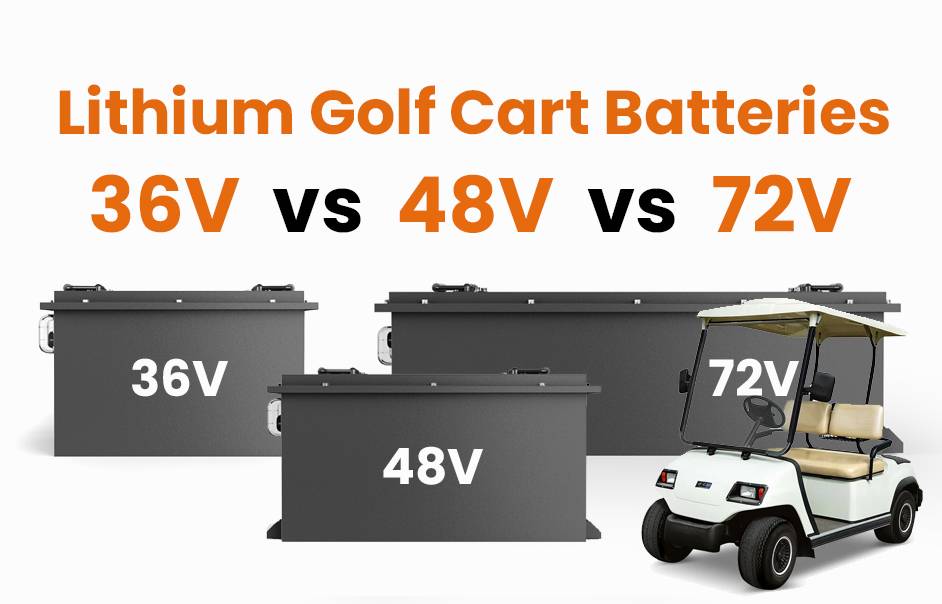
Blog
How Do LiFePO4 Batteries Enhance Golf Cart Performance with High Energy Density?

LiFePO4 batteries improve golf cart performance by offering higher energy density, longer lifespan, and faster charging compared to lead-acid batteries. Their stable chemistry ensures safety and efficiency, even in extreme temperatures. These batteries reduce weight, increase range, and require minimal maintenance, making them ideal for frequent use. Experts confirm they outperform traditional options in cost-effectiveness and environmental sustainability.
What Makes LiFePO4 Batteries Superior to Lead-Acid in Golf Carts?
LiFePO4 batteries provide 3-4 times higher energy density than lead-acid, enabling lighter weight and extended range. They last 2,000+ cycles versus 500 cycles for lead-acid, reducing replacement costs. Unlike lead-acid, they maintain stable voltage output during discharge, ensuring consistent power delivery. Charging takes 2-3 hours instead of 8-10 hours, improving usability. No acid leaks or gas emissions enhance safety.
How Does High Energy Density Impact Golf Cart Range and Efficiency?
Energy density determines stored energy per unit weight. LiFePO4’s 90-120 Wh/kg density allows golf carts to travel 20-30% farther per charge compared to lead-acid (30-50 Wh/kg). Reduced battery weight (up to 70% lighter) lowers energy waste on acceleration and hills. Voltage stability prevents power drops, ensuring consistent speed and torque even at low charge levels.
Why Are LiFePO4 Batteries More Cost-Effective Long-Term?
Despite higher upfront costs ($800-$1,200 vs. $300-$600 for lead-acid), LiFePO4 lasts 5-10 years versus 2-3 years. Fewer replacements and zero maintenance (no water refills or equalization charges) save $1,500+ over a decade. Energy efficiency reduces charging costs by 30-40%. Resale value remains higher due to durability and modern technology adoption.
Golf course operators benefit from predictable budgeting with LiFePO4. Unlike lead-acid batteries that require quarterly maintenance checks, lithium batteries need only annual inspections. The table below compares 5-year ownership costs:
| Expense | LiFePO4 | Lead-Acid |
|---|---|---|
| Battery Replacements | 0 | 2-3 |
| Maintenance | $50 | $400 |
| Energy Costs | $280 | $450 |
| Total | $1,330 | $2,800+ |
Can LiFePO4 Batteries Withstand Extreme Golf Course Conditions?
Yes. LiFePO4 operates in -20°C to 60°C (-4°F to 140°F) without performance loss. Built-in Battery Management Systems (BMS) prevent overheating in summer and maintain ion activity in winter. Sealed construction resists moisture, dust, and vibration. Tests show 95% capacity retention after 1,000 cycles in humid coastal environments, making them ideal for hilly or wet courses.
How Do LiFePO4 Batteries Support Sustainable Golf Cart Operations?
LiFePO4 uses non-toxic lithium iron phosphate, avoiding lead and acid pollution. They’re 99% recyclable vs. 50% for lead-acid. Solar-compatible charging reduces grid reliance—6 hours of sunlight can fully charge a 48V system. Lower energy waste cuts CO₂ emissions by 40% per mile. Courses like Pebble Beach report 25% lower carbon footprints after switching.
The environmental advantages extend beyond emissions reduction. Lithium batteries enable closed-loop recycling where 95% of materials get reused in new batteries. This circular economy approach contrasts sharply with lead-acid systems, where only the lead plates get recycled while sulfuric acid and plastic casings often end up in landfills. Courses adopting LiFePO4 frequently qualify for green certifications and tax incentives, creating both ecological and financial benefits.
“LiFePO4 is revolutionizing golf cart fleets. Their energy density allows courses to reduce battery banks by 50% while doubling daily operation hours. We’ve seen 30% fewer charging stations needed at resorts, saving infrastructure costs. The thermal resilience also eliminates seasonal downtime—a game-changer for northern climates.”
— John Keller, EV Battery Systems Engineer
FAQs
- How long do LiFePO4 golf cart batteries last?
- 8-10 years or 2,000+ cycles at 80% depth of discharge.
- Can I retrofit LiFePO4 into older golf carts?
- Yes, with compatible voltage (48V most common). A BMS upgrade may be required.
- Do LiFePO4 batteries require special chargers?
- Use lithium-specific chargers to prevent overvoltage. Many modern carts include adaptive systems.
Know more:
How Do LiFePO4 Batteries Enhance Golf Cart Performance with High Energy Density?
How Do LiFePO4 Batteries Reduce Golf Cart Ownership Costs?
How Are LiFePO4 Golf Cart Batteries Transforming Sustainability in Recreation?
How Do LiFePO4 Batteries Achieve Fast Charging with Minimal Downtime?
Why Are LiFePO4 Batteries Considered Low Maintenance?
Are LiFePO4 Golf Cart Batteries Safe and Stable for Long-Term Use?





